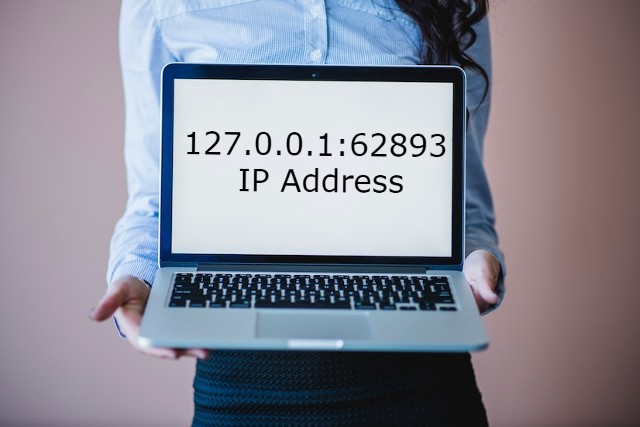In the expansive world of computer networking, IP addresses and port numbers are the bedrock upon which data communication is built. Among these, the IP address 127.0.0.1, often combined with a port number like 62893, is a critical part of the infrastructure that supports application development and local testing. This article delves deeply into the significance, usage, and technical nuances of the 127.0.0.1:62893 IP address.
Understanding the IP Address 127.0.0.1: Localhost
The 127.0.0.1 IP address is known as “localhost.” It is part of the reserved IP address block 127.0.0.0/8, which is designated for loopback network interfaces. Loopback addresses are used by a host to send network traffic to itself. This self-referential address is crucial for various diagnostic and testing purposes.
Purpose and Function
The primary function of the localhost address is to facilitate testing and development by redirecting network traffic back to the same machine. This allows developers to simulate network communications in a controlled environment without requiring an external network. For instance, when a server application binds to 127.0.0.1:62893 IP Address, it listens for incoming connections from applications running on the same host.
The Role of Port Numbers: Focus on 62893
Port numbers are used in conjunction with IP addresses to create unique endpoints, known as sockets, for network communication. These numbers range from 0 to 65535 and are divided into three categories:
- Well-Known Ports (0-1023): Assigned to widely used services and protocols (e.g., HTTP on port 80, HTTPS on port 443).
- Registered Ports (1024-49151): Reserved for user applications and services that require specific ports.
- Dynamic/Private Ports (49152-65535): Used for temporary or ephemeral connections by client applications.
Port 62893 falls into the dynamic/private range, typically used for temporary connections or specific applications not requiring a well-known or registered port.
Combining 127.0.0.1 and Port 62893
When combined, 127.0.0.1:62893 IP Address refers to a specific endpoint on the local machine, using port 62893 for the connection. This is commonly seen in scenarios where local services, such as web servers, databases, or development tools, are accessed locally.
Practical Applications
- Local Development Environments: Developers often run web servers, APIs, and databases on localhost to develop and test applications before deployment. For example, a developer might run a local web server on 127.0.0.1:62893 IP Address to test a website or web application.
- Database Access: Databases like MySQL, PostgreSQL, or MongoDB can be configured to listen on localhost for development purposes. This ensures that database queries and transactions are tested in isolation from the production environment.
- Microservices and APIs: In microservices architecture, different services may run on different ports on localhost during development. For example, a microservice responsible for user authentication might run on 127.0.0.1:62893, while another service for data processing runs on a different port.
Security Implications
While using localhost and dynamic ports like 62893 is generally safe for development, it is crucial to follow security best practices to prevent vulnerabilities:
- Access Control: Ensure that services running on localhost are properly secured and not exposed to external networks inadvertently.
- Firewall Configuration: Configure firewalls to restrict access to local ports, allowing only trusted applications and services to communicate.
- Regular Updates: Keep all software and development tools updated with the latest security patches to mitigate potential vulnerabilities.
Troubleshooting and Diagnostics
When issues arise with connections to localhost, several diagnostic steps can help identify and resolve the problem:
- Check Service Status: Ensure that the service intended to run on 127.0.0.1:62893 IP Address is active and properly configured.
- Port Conflicts: Verify that no other application is using port 62893, which could prevent the intended service from binding to it.
- Network Configuration: Inspect the network settings and ensure that the loopback interface is functioning correctly.
- Log Analysis: Check application and system logs for error messages that could provide clues about the issue.
Technical Deep Dive: How Localhost Works
The loopback interface (127.0.0.1) is a virtual network interface implemented entirely in software. It operates independently of physical network hardware and is always available on a properly configured system. Here’s a detailed look at its operation:
- Packet Routing: When an application sends a packet to 127.0.0.1, the network stack intercepts the packet and routes it back to the same machine without sending it through a physical network interface.
- Performance: Loopback communications are highly efficient since they bypass the physical network hardware, reducing latency and increasing throughput.
- Isolation: Using 127.0.0.1:62893 IP Address ensures that network traffic is confined to the local machine, providing a secure and isolated environment for testing and development.
Advanced Usage: Network Emulation and Testing
Developers and IT professionals often use localhost for advanced testing and network emulation scenarios:
- Simulating Network Latency: Tools like
tc(traffic control) on Linux can introduce artificial latency to loopback traffic, simulating real-world network conditions. - Containerization: In containerized environments (e.g., Docker), services often bind to localhost within their respective containers. Containers use network namespaces to isolate localhost traffic, ensuring secure and independent operation.
- Virtual Machines: Virtual machines (VMs) can also use localhost for internal communication. VMs typically have their own loopback interfaces, allowing them to simulate network traffic internally without involving the host machine’s physical network.
Conclusion
The 127.0.0.1:62893 IP Address exemplifies the powerful and versatile nature of local networking in computer systems. Understanding how localhost and dynamic ports work enables developers to create, test, and debug applications in a secure and controlled environment. By following best practices for security and troubleshooting, developers can maximize the efficiency and reliability of their development workflows. As technology continues to evolve, the principles of localhost and port management will remain foundational to networked application development and testing.


